Saving Nemo
6 Tips to Combat Microplastics and Become a Hero of the Ocean!
(You can find a more detailed picture of such a garbage island later in the article.)
In Germany alone, over 3 million metric tons of plastic packaging waste are produced each year1 and unfortunately, the ocean is often the repository of all this garbage.
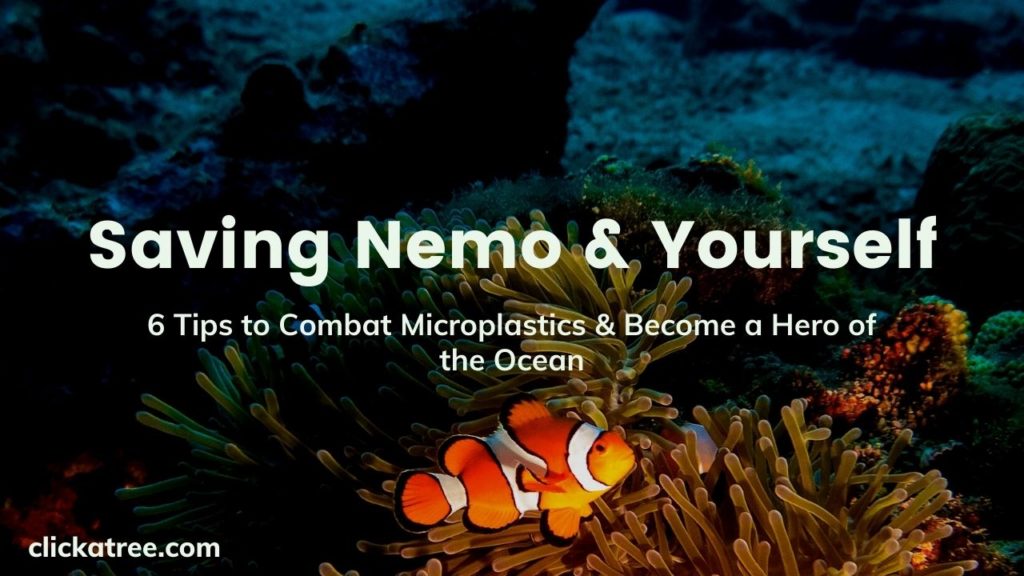
So much plastic waste! But how can we possibly combat microplastic in the ocean? And what does that have to do with friendships? Read on to find out.
Microplastic – the real monster under your bed
What is microplastic? Microplastic is composed of tiny plastic particles that spill into our rivers and collect in our oceans. From there they find their way into the food chain where they have a toxic effect on animals, plants & humans.
The danger is very real – scientists estimate that we already eat, drink and breathe in over 20 kg of microplastic in a lifetime2.
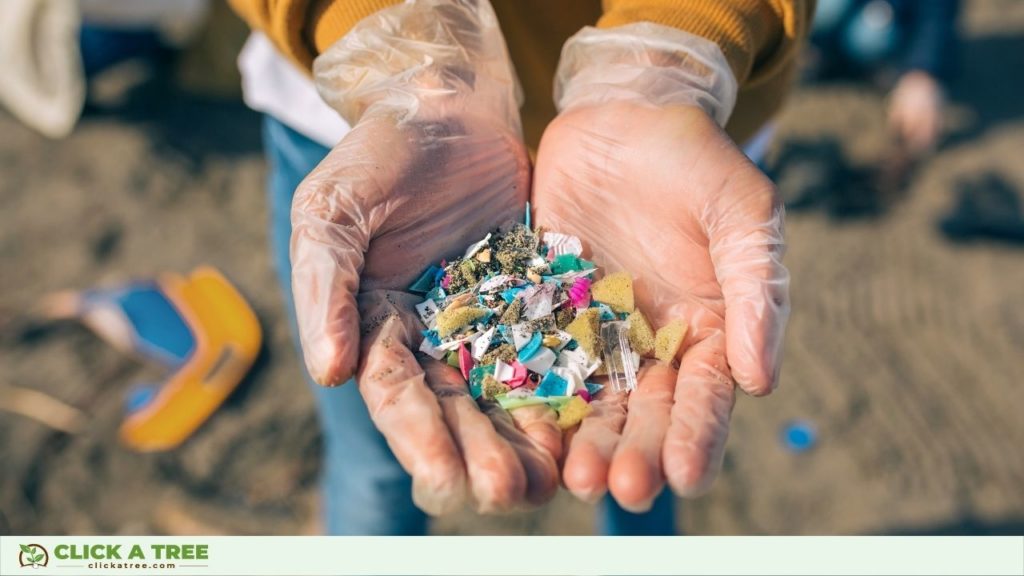
How does microplastic get into the ocean? There are several sources: artificial fibers, for example, are a big contributor.
But the biggest, of course, is plastic trash. Plastic trash, if left to float in the ocean, doesn’t disappear – it just breaks down into smaller pieces, also known as microplastic.
And so, garbage patches like the trash island in the Pacific Ocean aren’t actually islands at all – more like a mass of dirty water, so full of microplastics, it appears cloudy.
No, there aren’t any real monsters under your bed, honest! Okay, so maybe a dust bunny or two… A candy bar wrapper? That Halloween mask that seemed so much fun last October? Oh no! That leads us to our next point…
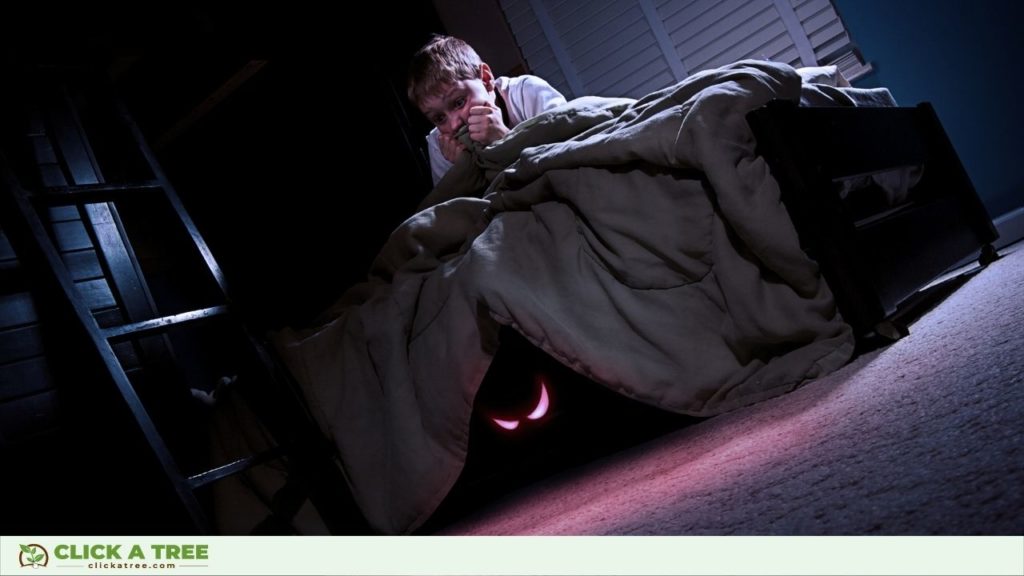
Now that you know where microplastics come from, let’s talk about how we are saving our oceans and fighting microplastics.
What you can do to reduce microplastic pollution
We are not going to get rid of all plastic overnight. We know that very well… But there are little things we can do to reduce the amount of plastic in our lives which collectively will make a huge difference.
Support your environmentally responsible local businesses
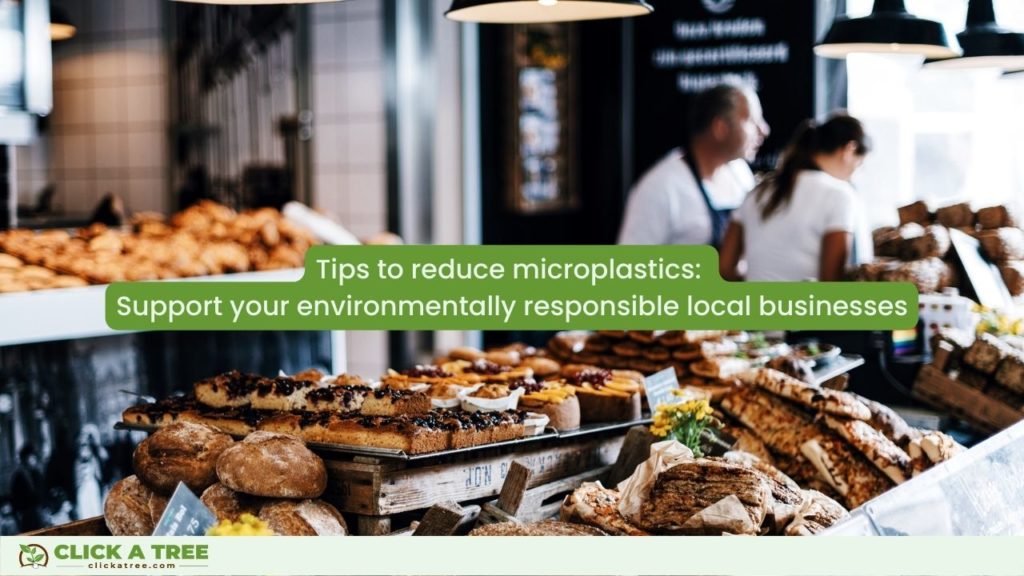
Take a good look at the things you got on your last food shopping trip. How much plastic?!
Make a conscious choice to shop at local businesses that are actively trying to reduce the amount of packaging and plastics they use. They deserve your support!
(And when you get to know them, they are probably really nice people too – we all need more friends, right?)
Would you also like to know how you can protect trees? You can find out more here.
Switch to reusable products
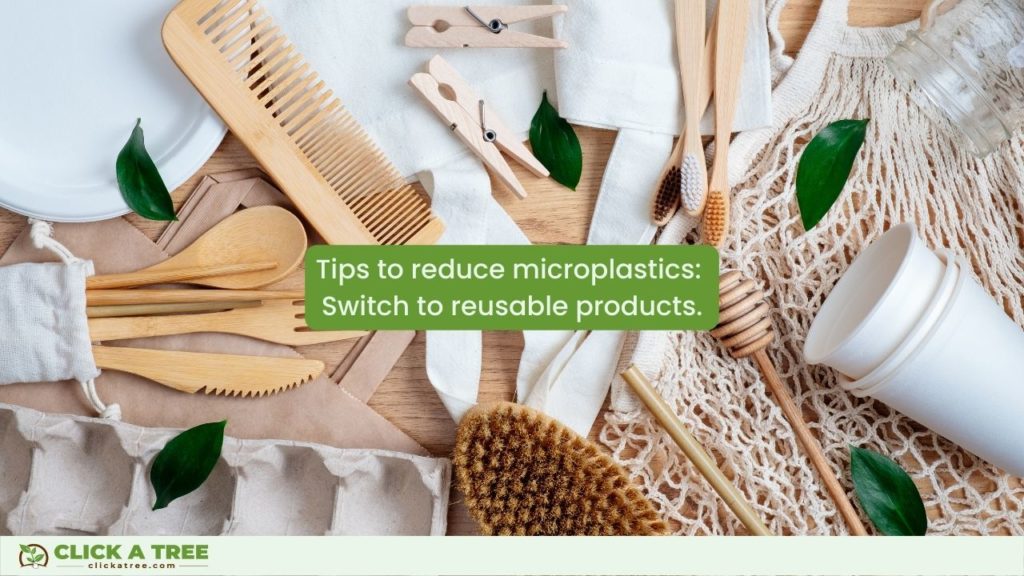
To stay hydrated on the go, invest in a good reusable water bottle. Unlike plastic, bottles made from metal don’t sweat, and they will keep their contents nicely chilled for hours!
There are many great options for reusable containers, metal straws, and compact cutlery sets. What’s even better is that they also make perfect gifts for all your loved ones!
And yes, that includes that long-forgotten Halloween mask as well… Why not save it and reuse it as part of your Halloween decorations later in the year?
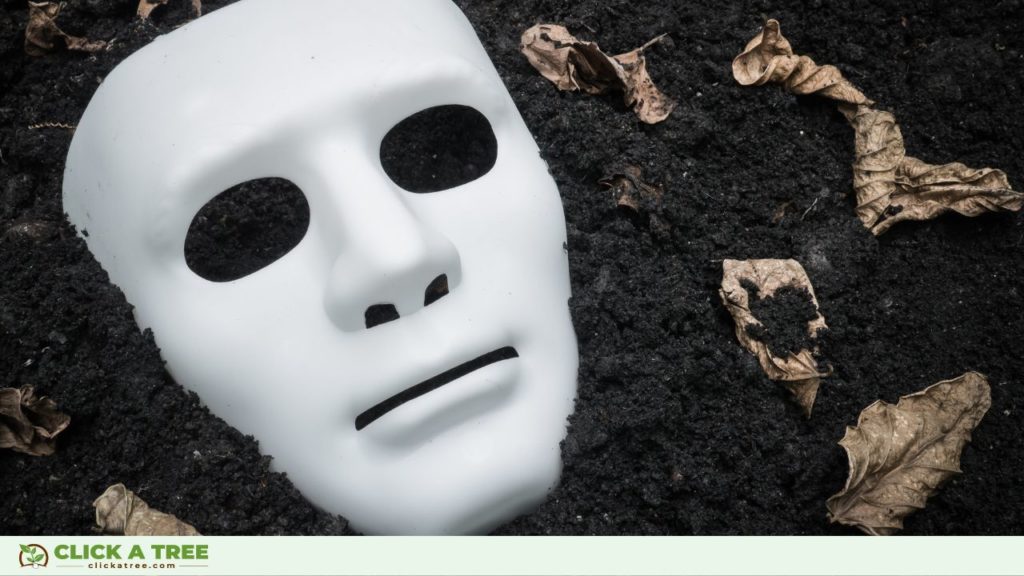
Are you currently looking for gifts? You can find 20 super cool ideas for sustainable gifts here.
Wear clothes made from natural fabrics
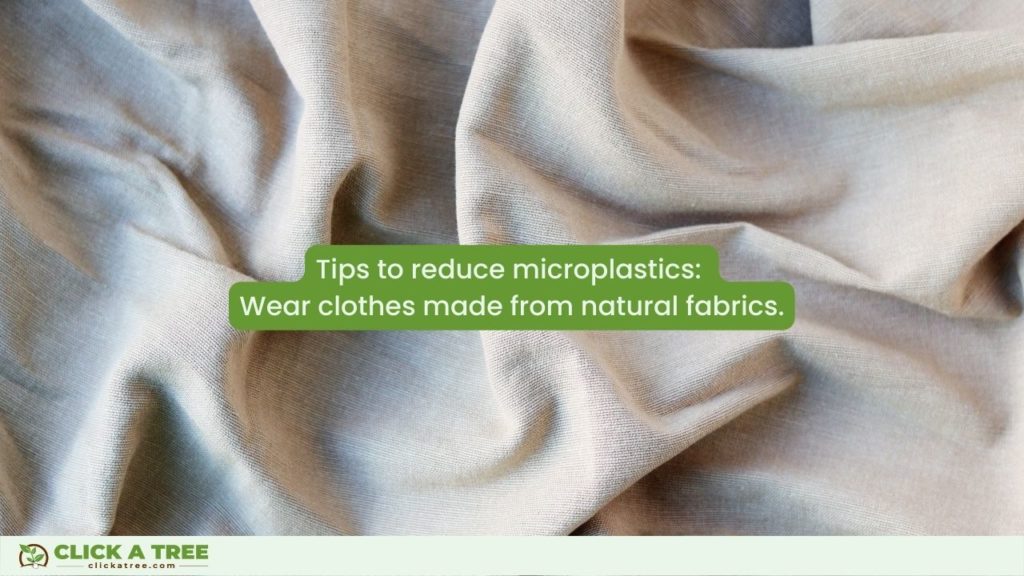
Did you know that fabrics made from synthetic fibers shed microplastic particles during the wash3? Not all of these are captured during wastewater treatment. Polyester and nylon in particular often end up as microplastic in our oceans.
Choosing natural fabrics, such as hypoallergenic sustainably-grown bamboo, is kinder to our planet’s oceans and to your skin!
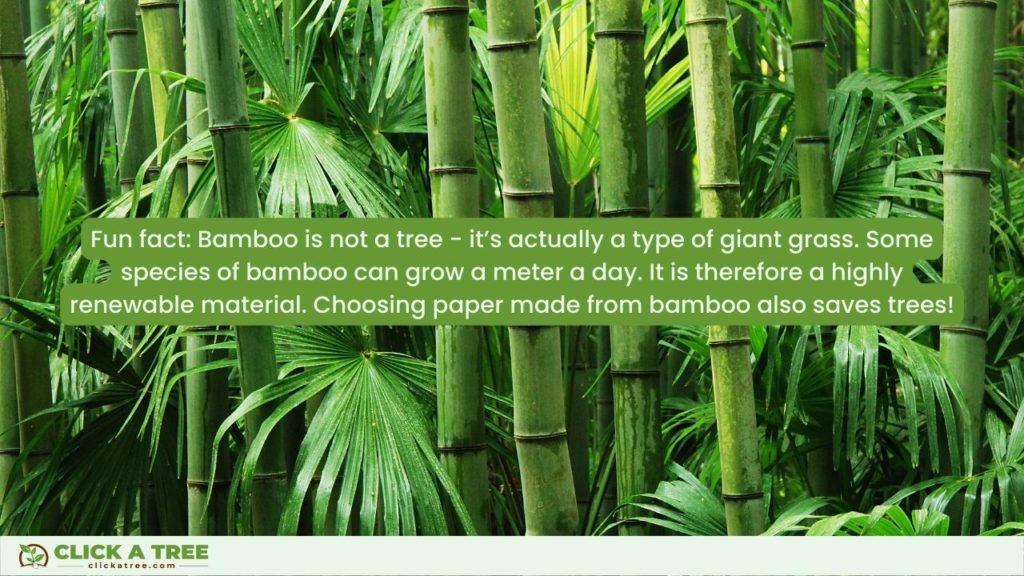
Skip the candy bar
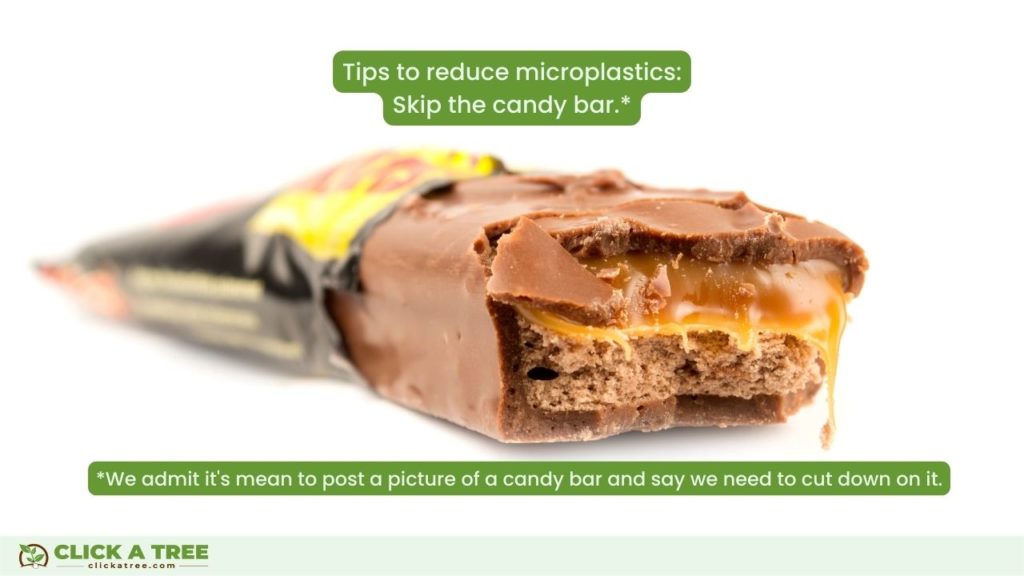
Yes, that’s a tough one… But did you know that candy bar wrappers are made from a combination of plastic & foil and are almost impossible to recycle?
And when you consider where so many candy bar wrappers end up, it’s really worth considering alternatives, especially when those alternatives include delicious homemade cookies!
For inspiration, take a look at some of these delicious vegan recipes. What’s your favorite cookie recipe? Share it with us! (We love cookies!)
Take part in a city or beach clean up
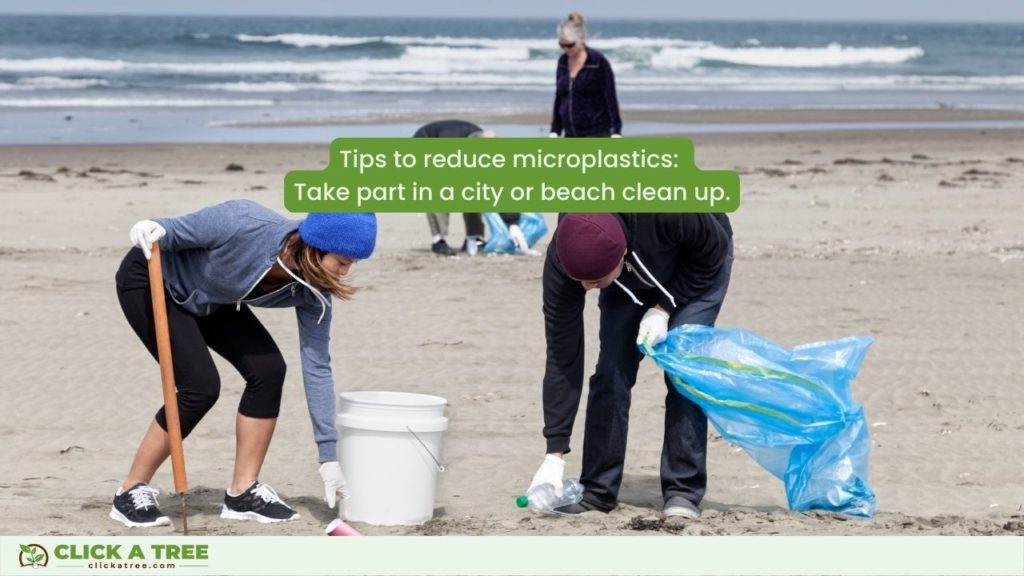
Take a look at your community notice board – there are clean-ups all over the place. It’s a great way of meeting new people and getting out into the fresh air.
If there are no events currently planned, start your own! Gather some friends, grab some garbage bags and go for a nice walk.
Even better, have a competition of who can gather the most trash! Take photos of your strangest & coolest finds and share them with us on Instagram.
Bonus Tip: Remove plastics from our oceans
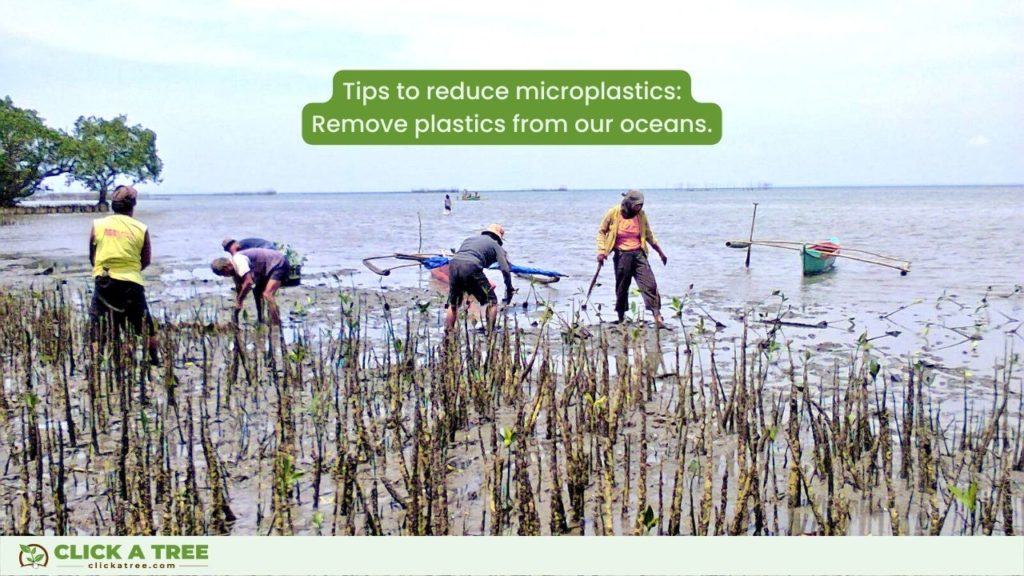
But what about all the plastic that’s in our oceans already?
Here it is worth mentioning projects like Trees for the Seas. Based in the Philippines, with Trees for the Seas we are planting beneficial mangrove trees that protect the coast from storm damage and erosion (and provide a nursery for wonderful marine life along the way).
Not only that but for every mangrove tree planted, 1 kg of plastic is removed from the ocean. Not only do the young hatchlings of important marine species get a protected environment to grow in, but they also benefit from safer food sources.
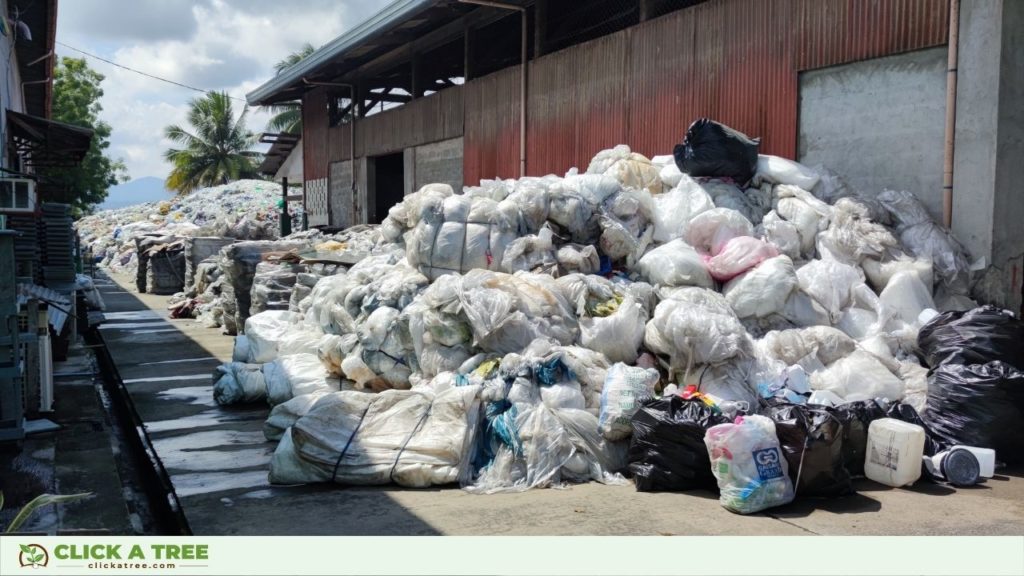
So if you are looking to treat that special someone in your life (because they’ve just baked you some amazing cookies, perhaps), why not plant a tree and dedicate it to them?
Trees for cookies, now there’s a thought!
You may also be interested in: The 10 Biggest Climate Change Myths Exposed.
Microplastics in our oceans – make a difference
Each year, tons of microplastics end up in our oceans, to the point where huge accumulations form, such as the Giant Pacific Garbage Patch, the biggest trash island in the sea.
From there microplastics enter the food chain, where they have a toxic effect on plants, animals, and humans.
We can reduce the pollution of our oceans by reducing the amount of plastic we use – by switching to reusable water bottles, cutting out foil-wrapped chocolate bars, and choosing clothes made from sustainable natural fabrics, for example.
If everyone makes little changes in their lives, we can make a big difference!
If you like this article, share it with your friends, and let’s save Nemo together!
Sources
2 https://graphics.reuters.com/ENVIRONMENT-PLASTIC/0100B4TF2MQ/index.html
3 https://www.plymouth.ac.uk/news/pr-opinion/plastic-pollution-and-the-planet